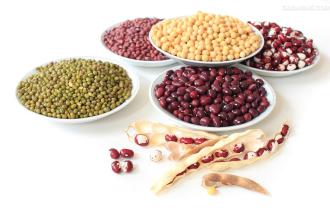Description of coffee bean flavor with baking degree of Tara beads in Costa Rica introduction of Grinding scale Variety Manor
Description of coffee bean flavor with baking degree of Tara beads in Costa Rica introduction of Grinding scale Variety Manor
Generally speaking, a large amount of water is used in the post-processing of the picked coffee fruit, but the advanced production equipment in Costa Rica saves the use of water resources to the greatest extent, and a circulating filter is used to treat the waste water from washing coffee beans. let the waste water be purified into clean water to prevent pollution of the local soil environment.
After peeling, the peel and pulp of the coffee fruit are recovered as feed for livestock, or converted into organic fertilizer, as well as coffee bean dryer fuel. It can be said that in every process of coffee production, Costa Rica complies with the requirements of maintaining the natural environment.

Because of the coffee industry, Costa Rica is a more advanced profession. Coffee farmers have a high status in Costa Rica. In 1897, citizens of the capital witnessed the completion of the National Theater donated by coffee tycoons. Coffee wealth brings stability to Costa Rica's politics, economy and democracy, which is rare in Central American countries. In addition, Colombia has a law that only allows the planting of Arabica, and Robasta is a "contraband" in its territory, which is also the only initiative seen in the world.
Costa Rica's production is small, with an annual output of about 110000 tons, ranking seventh in Central and South America. Costa Rica is dominated by recent coffee varieties, such as Kaddura, Kaduai, New World, etc., while the ancient bourbon and Tibica are rare. There are also many varieties in the territory, the most famous is the bourbon variety Vera Saatchi, a variety of elegant flavor, Brazil has also been introduced and planted, has won a prize. In addition, Costa Rican research institutions have spared no effort to improve the mixed-race Katimo, trying to reduce the stout bean pedigree and enhance the Arabica flavor of Katimo, which has been exported to Asia for trial cultivation in recent years.
Costa Rica mostly uses washing treatment, and in recent years there has also been an alternative half-sun treatment (Miel) or Honey Coffee, which can be translated as "as sweet as honey" treatment. The coffee that Costa Rica claims to be "as sweet as honey" is Honey Coffee on the sack, which is quite eye-catching. It has improved the Brazilian half-sun method to increase sweetness, focusing on keeping the pectin layer glued to the pods as completely as possible, removing the peel and moving the sticky pods to an outdoor viaduct, similar to Kenyad's practice, so as not to absorb the odor and moisture of the land, then expose to the sun and air-dry for about a week or two. During this period, you have to turn the pods every hour to make them evenly dry, so that the beans can fully absorb the fruit aroma and sugar essence of the thick pectin layer, and put them into a wooden container to ripen after dehydration. It takes a lot of work, but the fruit of "honey wine" tastes as sweet as honey. The disadvantage is that the risk of this method is very high, and it is easy to mildew and rot when the weather is too wet. Costa Rica is not as dry as it is, but it dares to use the treatment of exposure for a long time, which makes people feel cold sweat, but it also reflects Costa Rican coffee craftsmanship.
Important Notice :
前街咖啡 FrontStreet Coffee has moved to new addredd:
FrontStreet Coffee Address: 315,Donghua East Road,GuangZhou
Tel:020 38364473
- Prev

Flavor description of Jamaican Blue Mountain Coffee Bean introduction to the characteristics of varieties in the manor area
Flavor description of Jamaican Blue Mountain Coffee beans the characteristics of varieties produced in the manor area introduce a series of products such as Valenford Blue Mountain mixed coffee and Valenford black gold flavor coffee. Wallenford Coffee Co., Ltd. is an unlisted company wholly owned by the Jamaican government. The company's Blue Mountain Coffee Plantation is located in the central area of the Blue Mountains at the junction of St. Andrews and Portland.
- Next

Description of Yejia Coffee washing Flavor introduction to the regional treatment method of manor production
Yejia Coffee Cochel washing Flavor description of the taste the so-called Yejia Snow Flavor refers to the strong aromas of jasmine, lemon, peach, almond and tea. The author's tasting experience has only one sentence: coffee entrance, flowers in full bloom! Just like a flower touches the comfort of taste buds and olfactory cells in the nasal cavity. In addition to the fragrance of the flowers, the delicate mellow thickness (body) is especially
Related
- Detailed explanation of Jadeite planting Land in Panamanian Jadeite Manor introduction to the grading system of Jadeite competitive bidding, Red bid, Green bid and Rose Summer
- Story of Coffee planting in Brenka region of Costa Rica Stonehenge Manor anaerobic heavy honey treatment of flavor mouth
- What's on the barrel of Blue Mountain Coffee beans?
- Can American coffee also pull flowers? How to use hot American style to pull out a good-looking pattern?
- Can you make a cold extract with coffee beans? What is the right proportion for cold-extracted coffee formula?
- Indonesian PWN Gold Mandrine Coffee Origin Features Flavor How to Chong? Mandolin coffee is American.
- A brief introduction to the flavor characteristics of Brazilian yellow bourbon coffee beans
- What is the effect of different water quality on the flavor of cold-extracted coffee? What kind of water is best for brewing coffee?
- Why do you think of Rose Summer whenever you mention Panamanian coffee?
- Introduction to the characteristics of authentic blue mountain coffee bean producing areas? What is the CIB Coffee Authority in Jamaica?

